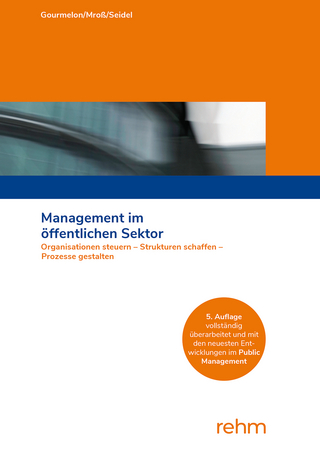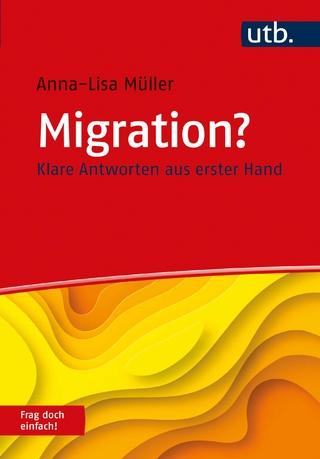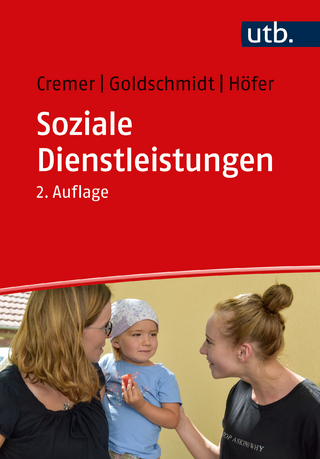
Advocating for the Common Good
Rowman & Littlefield (Verlag)
978-1-5381-5522-6 (ISBN)
Jane West is an independent education policy consultant based in Washington D.C. She began her policy work as an intern in the U.S. Senate for Senator Lowell P. Weicker (R-CT) in 1983, where she went on to serve as staff director for the Subcommittee on Disability Policy of the Committee on Health, Education, Labor and Pensions (HELP). She has been active in policy making for over forty years working for a range of federal government agencies as well as national organizations, including the Presidential Task Force on the HIV Epidemic, the National Council on Disability, the Social Security Administration, the U.S. Department of Education, the American Association of Colleges for Teacher Education, the Joseph P. Kennedy Jr. Foundation, The National Network of State Teachers of the Year, the Higher Education Consortium for Special Education, and the Teacher Education Division of the Council for Exceptional Children. She has written and spoken extensively on policy and advocacy in education and disability and served on the faculties of the University of San Francisco, the Johns Hopkins University, the University of Maryland, and Virginia Commonwealth University designing and teaching public policy courses. For more information see: https://www.janewestconsulting.com/
Acknowledgments
Author’s Note
Introduction
Chapter 1: People
The Iron Triangle
Congress
Congressional Staff and Congressional Committees
Relationships Are Everything
The Executive Branch
Interest Groups
Professional and Trade Associations
Business or Corporation Associations
Public Interest Groups
Think Tanks
What Do Interest Groups Do in Relation to Policy and Advocacy?
Political Action Committees and 501 © (4)’s
Coalitions
Government Relations/Lobbying Firms
Lobbying
Beyond the Iron Triangle
The Courts
Social Media and the Press
Public Opinion
Constituents
Grass Roots Movements and Organizations
Experts
The Culture of Policy Making vs. the Cultures of Other Sectors
Representation Matters
Take Aways: The People
References
Chapter 2: Politics
Majorities and Minorities in Congress
Seniority in Congress
The White House
Election Cycles
Participating in Election Campaigns
Transitions after Winning an Election
Bipartisanship
Tale Aways: The Politics
References
Chapter 3: Process
Part I: Summary of the Literature on Public Policy Making Processes
Framework #1: the Cyclical Framework
Problem Definition
Agenda Setting
Policy Formulation
Policy Adoption
Policy Implementation
Policy Evaluation
Framework #2: Policy Streams
Part II: Congressional Procedures
How a Bill Becomes a Law: The Seven Steps of Regular Order
Bill Introduction
The Committee Receives the Bill
Possible Referral to Subcommittee
Hearings and Markups
Floor Consideration
Conference Committee
President’s Signature
Three Core Legislative Processes: Budget, Appropriations, Authorization
Budget Process
Reconciliation
Deeming Resolutions
Appropriations Process
Mandatory and Discretionary Spending
Earmarks
Authorization Process
Other Congressional Processes
Oversight and Investigations
Confirmations
Senate and House Rules
Committee on Rules of the House of Representatives
Filibuster and Cloture in the Senate
Part 3: Executive Branch Processes
Executive Orders
Federal Rulemaking
Before the Proposed Rule
The Proposed Rule
Before the Final Rule
The Final Rule
After the Final Rule
Negotiated Rulemaking
Other Key Federal Agency Functions Related to Policy Making
Guidance
Take-Aways: The Processes
References
Chapter 4: Policy
Which Comes First: The Problem or the Solution?
Policy Tools
Grants
Appropriations
Civil Rights
Accountability
Data Collection
Enforcement Mechanisms
Research
Individual Benefits
Tax Code
Requirements Related to Implementation by Federal Agency
What is Good Policy?
The Americans with Disabilities Act and the Use of Standardized Assessment in Federal Education Policy: Point/Counterpoint
The ADA: A Remarkable Policy
NCLB and Its Derivatives: The Use of Standardized Assessments in Federal Education Policy A Cautionary Tale
Race to the Top 2009
Teacher Preparation Regulations 2011-2017
Lessons Learned
Take Aways: The Policy
Chapter 5: Advocacy: Putting It All Together
Advocating with Congressional Offices
First and Foremost: Build a Relationship
Prepare for Meetings
Provide Background Information, Data, Stories
Refine Your Message so it Will Be Heard by Your Audience
Be Prepared with No More than Three “ASKS”
Offer Invitations to Speak or Visit
Don’t Get Mad or Argue or Talk Politics
Always Follow Up
Keep Showing Up
Add Your Voice to a National Organization
Advocating with the Executive Branch
Artifacts for Advocacy
Committee and Subcommittee Activities: Hearings, Markups, and More
Other Statements from Members of Congress
Status of Bills Introduced
Reports from the Congressional Research Service
Documents from the Government Accountability Office
Developments from the White House and Federal Agencies
Connecting Research, Practice, and Policy
Participating in a Committee Hearing or a Town Hall Meeting
Impact of the COVID-19 Pandemic on Advocacy Activities
Impact of January 6, 2021 Events at the Capitol on Security Measures
In Closing
Take Aways: Advocacy
Chapter 6: Wrapping Up: Being at the Table… Not on the Menu
References
Index
About the Interviewees
About the Author
| Erscheinungsdatum | 13.05.2023 |
|---|---|
| Reihe/Serie | Special Education Law, Policy, and Practice |
| Zusatzinfo | 5 BW Illustrations, 3 Tables |
| Verlagsort | Lanham, MD |
| Sprache | englisch |
| Maße | 184 x 263 mm |
| Gewicht | 635 g |
| Themenwelt | Sozialwissenschaften ► Pädagogik |
| Sozialwissenschaften ► Politik / Verwaltung ► Staat / Verwaltung | |
| ISBN-10 | 1-5381-5522-2 / 1538155222 |
| ISBN-13 | 978-1-5381-5522-6 / 9781538155226 |
| Zustand | Neuware |
| Informationen gemäß Produktsicherheitsverordnung (GPSR) | |
| Haben Sie eine Frage zum Produkt? |
aus dem Bereich


